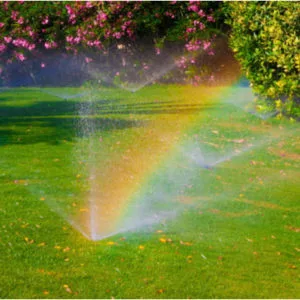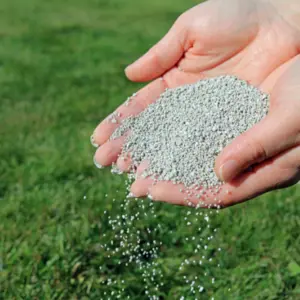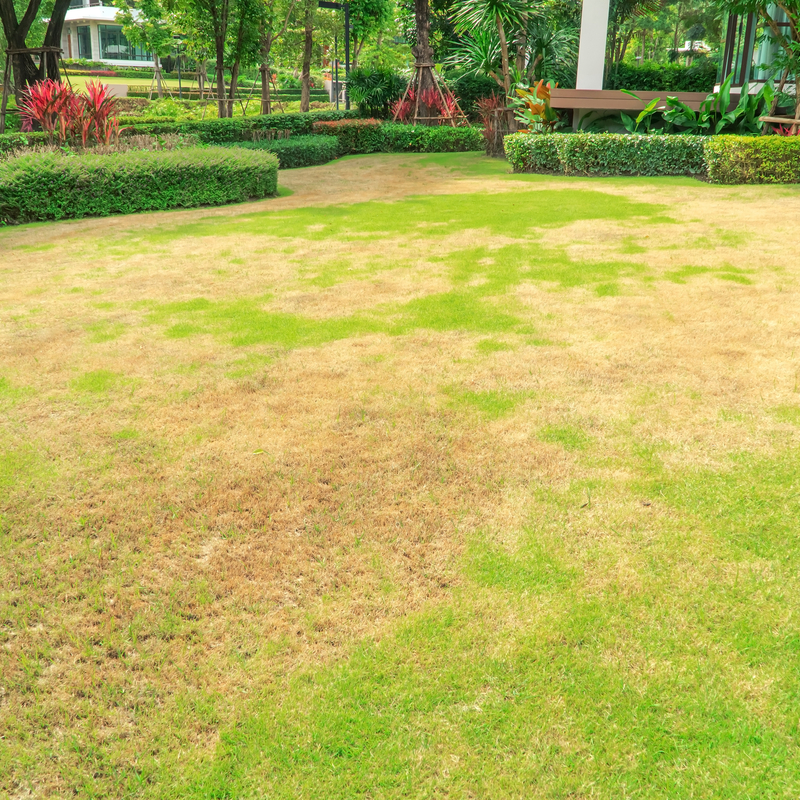Summer is in full swing here in North Carolina! While you are enjoying your outdoor barbecues, hot days on the golf course, or sitting around the campfire making s’mores, don’t allow months of hard work maintaining your lawn to end now. Sometimes our humid subtropical climate creates the perfect environment for a variety of lawn diseases and issues. It’s during late summer that we need to be especially vigilant. One such disease that likes to pop up each season is brown patch. Brown patch can destroy a healthy, beautiful lawn in no time. Fortunately, there are things you can do to help prevent this from happening.
What Exactly Is Brown Patch?
Brown patch is a lawn disease caused by the Rhizoctonia fungus. It usually appears when the grass has been wet for an extended period or when temperatures drop below 68 degrees. Brown patch is common in early spring and late fall when damp grass doesn’t have enough daylight hours to dry.
Symptoms of brown patch are large circular and irregular patches of dead grass. It often appears like it’s suffering from drought and is dried out. As the fungus spreads, the infected grass may wither and die, allowing weeds to quickly take over. The biggest problem with brown patch is that it spreads rapidly. So, how do you prevent this dreadful disease from destroying your lawn?
Get on an Irrigation Schedule

Because water helps the brown patch fungus grow, it’s essential to follow a strict irrigation schedule. Never over-water your lawn, as sitting moisture can spark the brown patch fungus. Also, make sure your yard is draining water properly.
Here Are a Few General Watering Recommendations That Will Help Keep Your Lawn Healthy
- Water in the early morning, if possible. This is the preferred time to water because it reduces the risk of disease, water loss through evaporation, and improper water distribution. Also, the demand for water by industry and municipalities is usually low at this time.
- Water established lawns to a soil depth of six to eight inches to encourage deep rooting. Typically, one inch of water per week is adequate. Rather than apply it all in one application, apply a half-inch of water every three or four days.
- Use cans or a rain gauge to determine how much water is being delivered in a certain period of time. It takes 640 gallons of water to apply one inch of water per 1,000 sq ft. Because clay soils accept water slowly, water should be measured to prevent wasteful runoff.
Clay soils should be watered until runoff is about to occur. Wait 30 minutes for the water to be absorbed. Then apply more water until the desired depth or amount is achieved. This same technique can be used on slopes and compacted soils.
Few lawns established on clay soils can absorb more than 0.5 inches of water per hour. Sandy soils require more frequent watering. Applying 0.5 inches of water every third day is usually sufficient. Adjust any automatic irrigation system to supplement rainfall so that the lawn is not over-watered.
Fertilize Regularly

Fertilizers are like food for your grass. They help to make your grass healthy, vibrant, lush and green. Fertilizing your lawn makes it more resistant to diseases such as brown patch, but knowing when to fertilize is very important. It’s best to leave this up to the professionals. Pine Valley Turf has several different lawn care programs that utilize a custom-blend liquid fertilizer that contains nitrogen, phosphorus, potassium, and a micronutrient package to nourish your root systems and revitalize the soil pH balance.
Aerate Your Yard
Thatch, an intermingled blend of dead grass stems, shoots, and clippings, gather between the soil and the grass, causing build-up. As layers of broken down leaves and grass clippings build- up it creates the ideal moist conditions that the brown patch needs to thrive. It also increases the likelihood of your soil becoming compacted. Compacted soil prevents water and nutrients from reaching your roots, creating even more problems for your yard. Core aeration can loosen up thatch, decompact your soil and allow water and air to flow back into the ground to the roots of your grass.
A professionally done aeration service offers a variety of benefits, including:
- Stronger root systems
- Minimized soil compaction
- Increased tolerance to heat and drought stress
- Optimized fertilizer intake and use
- Decreased puddling and water runoff
- Increased thatch breakdown
- Reduction of pests and diseases
Overseeding
Core aeration is just one step in creating a beautiful and healthy lawn. Overseeding is the next step and is the process of reseeding your yard with other types of grasses over your existing grass to improve its appearance and resistance to pests and disease. Overseeding, when combined with lawn aeration, will significantly improve the health and thickness of your grass. A thick lawn can also block sunlight from reaching dormant weed seeds and prevent them from germinating. Pine Valley Turf provides all of these services.
Bermudagrass Suppression
While brown patch affects all types of grasses, bermudagrass is most susceptible. A warm-season grass that requires lots of sun, it is used often in the south, especially for sports fields, golf courses, and parks. It is known for its exceptional heat and drought tolerance. Love it or hate it, bermudagrass is tough to control. It is one of the fastest-growing grasses and can often be found invading a neighbor’s fescue or bluegrass lawn. Pine Valley Turf offers a service called Bermudagrass Suppression, which is designed to keep small quantities of bermudagrass from spreading and taking over.
For the ultimate protection against brown patch, call your local experts at Pine Valley Turf. You can reach us at (704) 831-8917, or you can go straight to our request for a quote form for a more direct option. You can also find us on our Facebook page if you are looking for more information.



